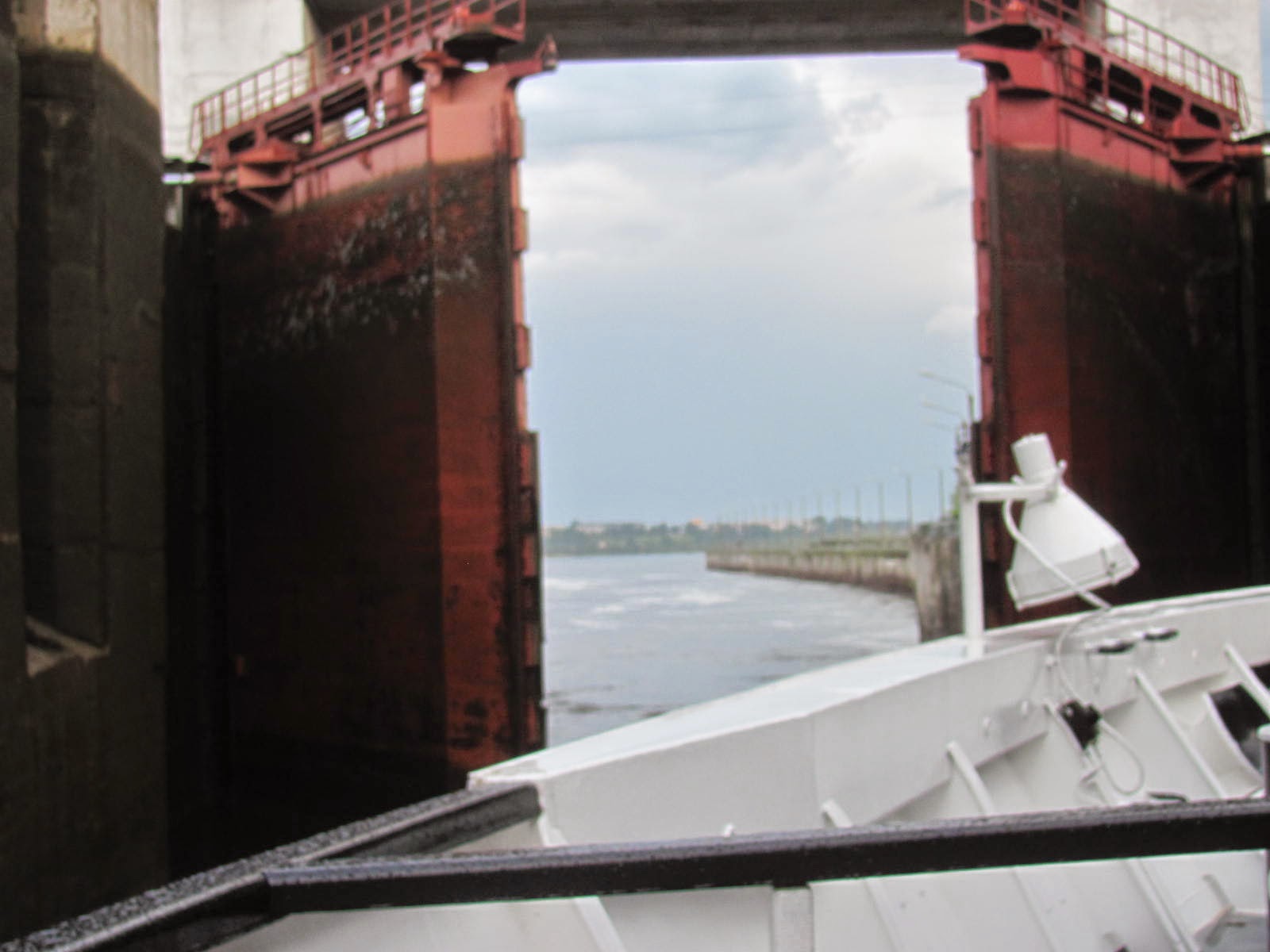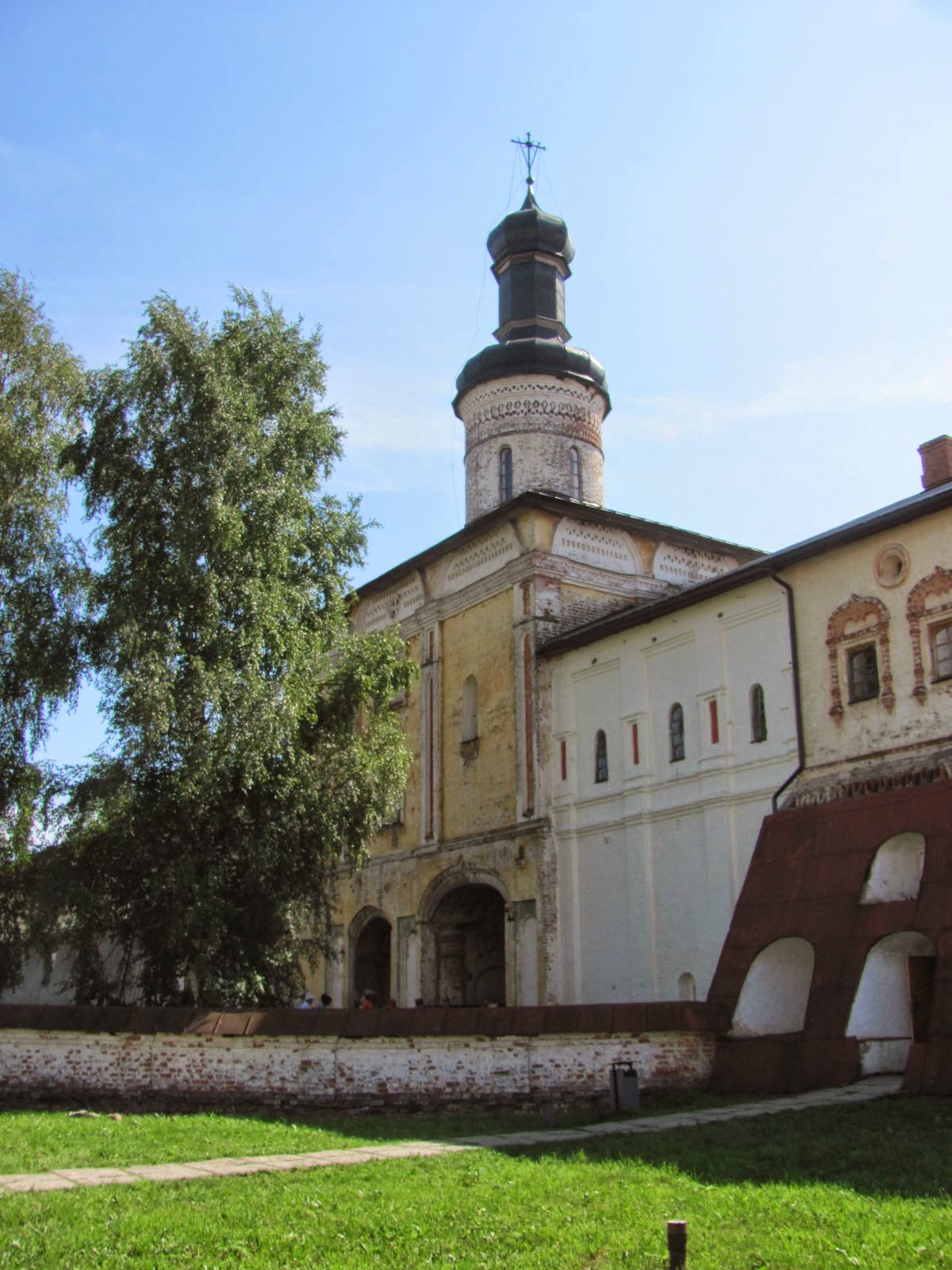This is a pleasant little island, an open-air museum with
almost 80 historical structures brought from the surrounding area. It is a
World Heritage site. There are two spectacular churches from the 18th century. One has 22 domes, the other merely nine.
The domes are covered in hand-hewn birch shingles. They are particularly pretty because they change color in the sunlight. This morning they appeared to be silver where the sun hit them directly.
There was an ongoing demonstration of shingle-making, made with an axe. We were told that saws damage the wood, so only axes are used for making shingles as well as making boards.
There are a total of four churches, a farmhouse with
attached barn, a traditional sauna, a wind-powered grain mill.
I was especially interested in flax. Becausse we arrived in
the morning, the flax was in bloom. There were the various tools used to
prepare flax for spinning into linen thread for ultimately weaving into cloth. Historically, sails were linen, as well as some clothes.
 |
| Flax, blooming in the morning sun. |
 |
| dried flax |
 |
| Flax preparation tools |
 |
| Spinning with distaff holding wool on the spinners left. |
A young woman demonstrated spinning in the farmhouse. (Those of you who are not interested in spinning might want to hop to the next paragraph.) The traditional spinning
method involved the usual combing, but then they used a decorated board with a
flat bottom that the spinner would sit on to hold it in place. (It was called a distaff, which is a term
I have only heard used with flax spinning). The combed wool was placed under a
set of straps, and the wool was pulled from the distaff, and spun on a spindle
that is just a short turned rod – there is no whorl on it.
The island was beautiful in the summer sunshine, surrounded
by the water of Lake Onega on all sides. The ocal communities were farming
communities, but now there are no permanent residents.
And by the way, Lake Onega is the second-largest in Europe -- 40 miles across!! for three to four hours today, we couldn't see any shore at all.
 This
is the Ode to the Boot. They are not cute or chic, but you wouldn't
believe the warm, fuzzy feelings I have for these L L Bean boots.
This
is the Ode to the Boot. They are not cute or chic, but you wouldn't
believe the warm, fuzzy feelings I have for these L L Bean boots.




.JPG)


















































